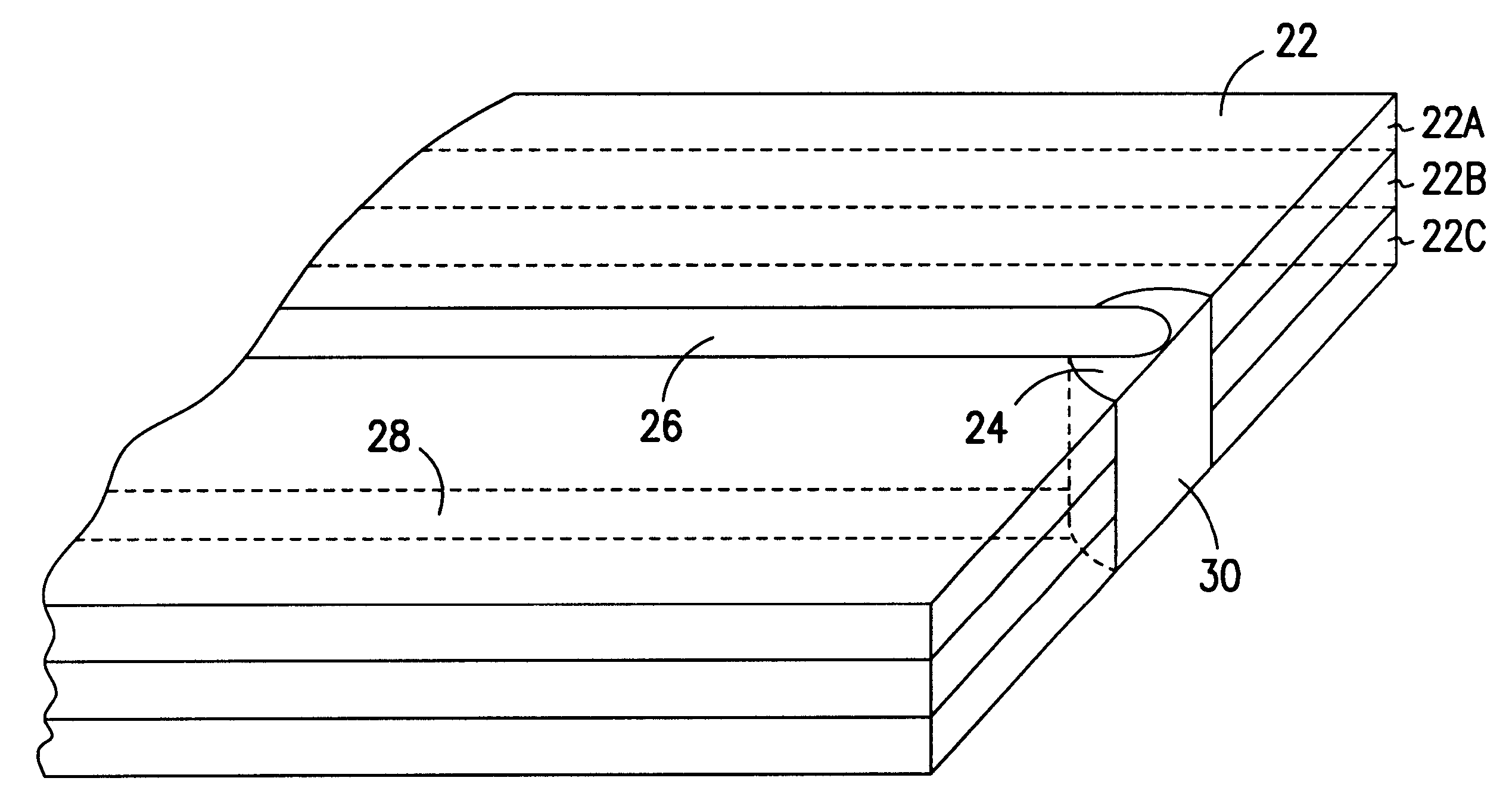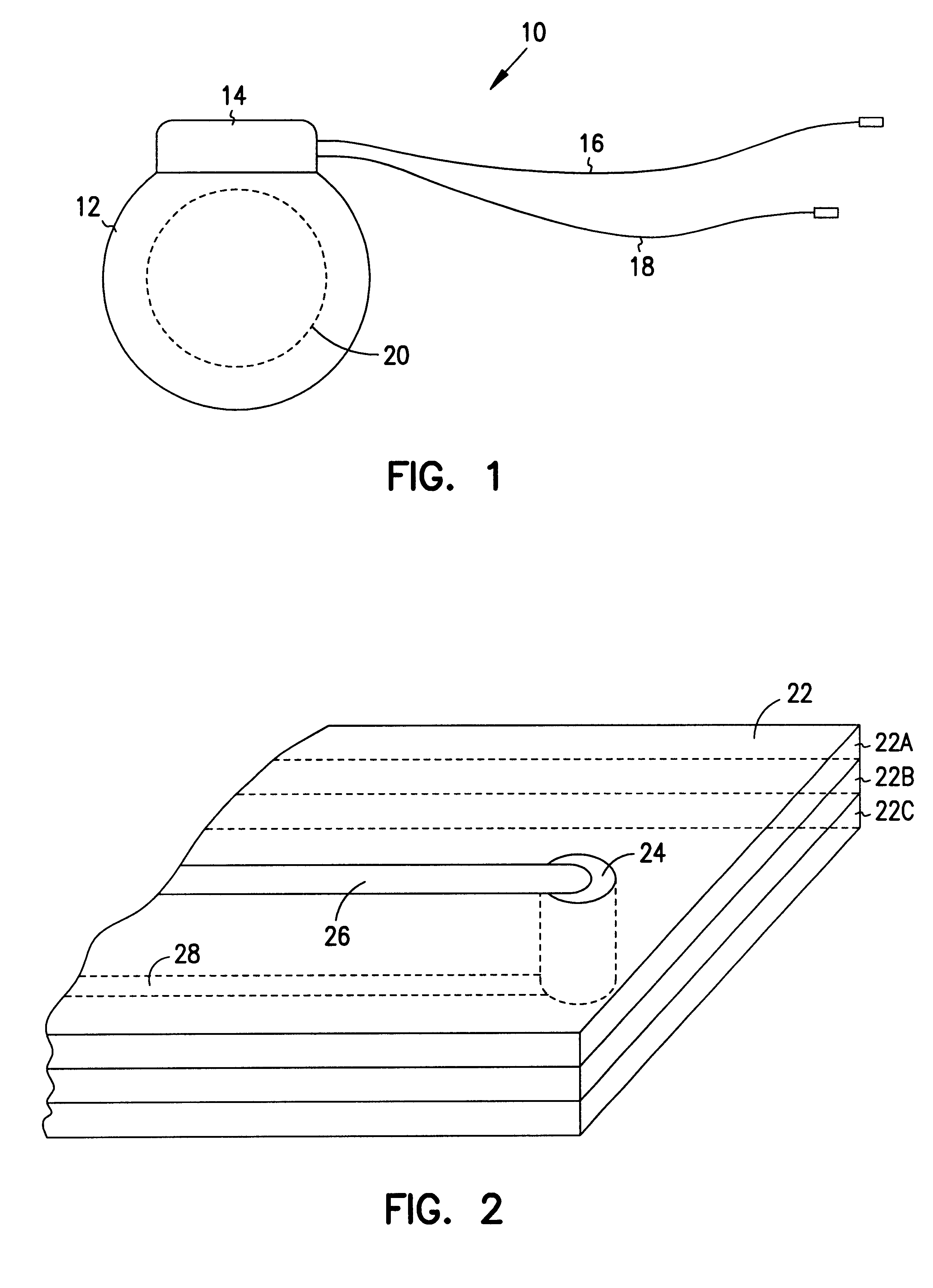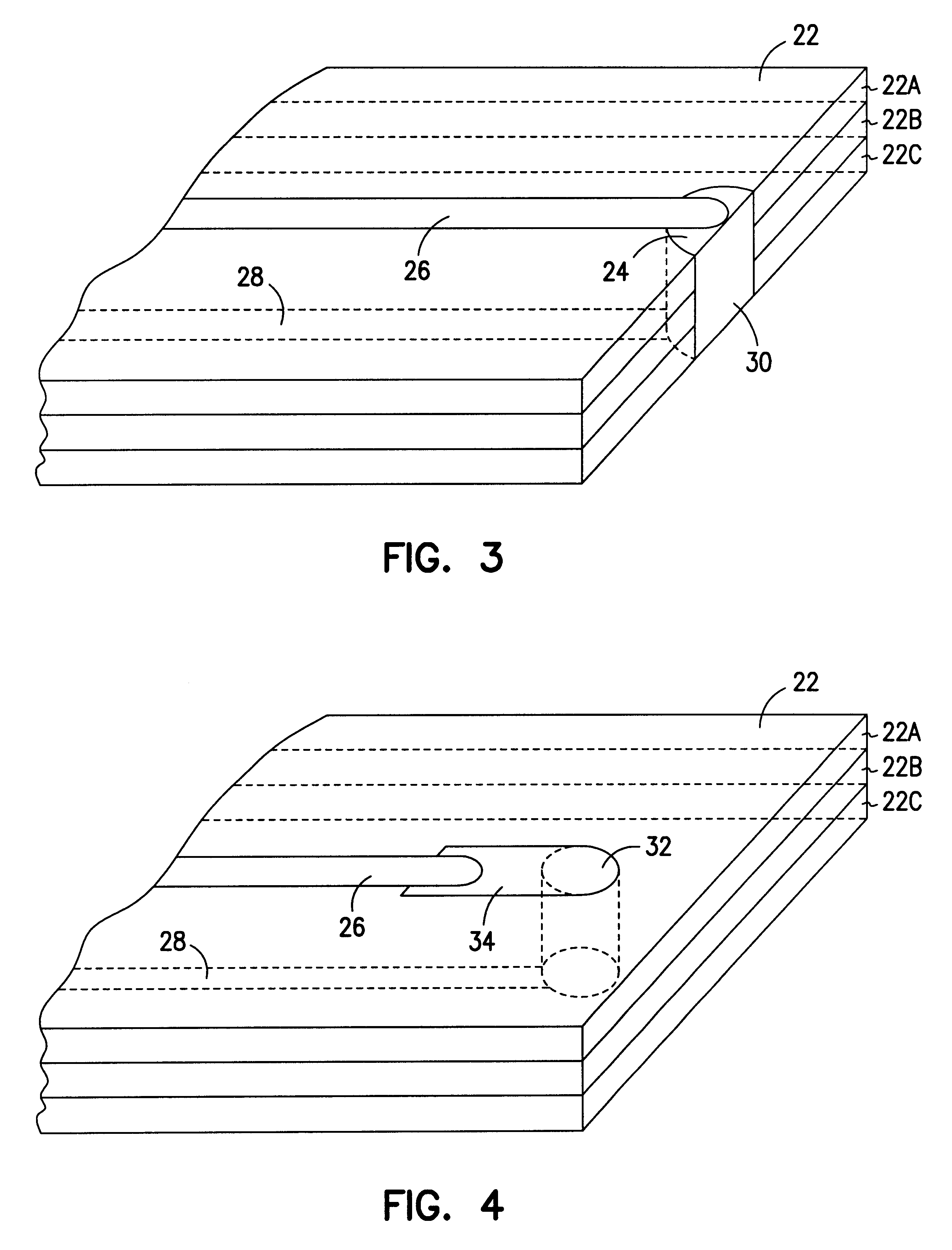Embedded trimmable resistors
a technology of resistors and trimmable parts, applied in the direction of resistor details, resistor enclosure/enclosement/embedding, printed element electric connection formation, etc., can solve the problems of occupying a relatively large area for resistor creation, affecting the operation of the heart, and endangering the well-being of the person
- Summary
- Abstract
- Description
- Claims
- Application Information
AI Technical Summary
Problems solved by technology
Method used
Image
Examples
third embodiment
FIGS. 5 and 6 illustrate an embedded trimmable resistor. Again, for the purposes of clarity, elements similar to those discussed previously will be designated with the same reference numerals. Unlike the previously embodiments in which the resistor is illustrated as extending between an upper surface and a lower surface of the substrate 22, FIG. 5 illustrates a resistor 40 which resides in a cavity and only extends through an interior layer 22B of the substrate 22. Hence, the resistor 40 is completely covered by the layers 22A and 22C of the substrate 22. A conductor 26 may be disposed on the upper surface of the layer 22B and a conductor 28 may be disposed on the lower surface of the layer 22B to provide electrical coupling to the resistor 40. A portion 46 of the resistor 40 which extends through the layer 22B will ultimately be exposed, as illustrated in FIG. 6, so that the resistor 40 may be trimmed to the desired resistance level.
In addition to the portion of the resistor 40 tha...
fourth embodiment
an embedded trimmable resistor is illustrated in FIGS. 7 and 8. Like the resistor 40, the main portion of the resistor 50 is disposed through an interior layer 22B of the substrate 22. However, unlike the third embodiment, the conductors 26 and 28 that are coupled to the resistor 50 are disposed on the upper and lower outer surfaces, respectively, of the substrate 22. Therefore, to connect the conductors 26 and 28 to the embedded resistor 50, vias are formed in the upper layer 22A and the lower layer 22C. The vias may be filled with conductive material, or the vias may be filled with resistive material similar to the resistive material used to form the resistor 50. Like the first and third embodiments described above, the resistor 50 is advantageously fabricated near an edge of the substrate 22 so that a portion of the edge may be removed to expose a portion 52 of the resistor 50. Once exposed, the portion 52 of the resistor 50 may be trimmed to adjust the resistance of the resistor...
PUM
| Property | Measurement | Unit |
|---|---|---|
| electrically resistive | aaaaa | aaaaa |
| resistance | aaaaa | aaaaa |
| electrically conductive | aaaaa | aaaaa |
Abstract
Description
Claims
Application Information
 Login to View More
Login to View More - R&D
- Intellectual Property
- Life Sciences
- Materials
- Tech Scout
- Unparalleled Data Quality
- Higher Quality Content
- 60% Fewer Hallucinations
Browse by: Latest US Patents, China's latest patents, Technical Efficacy Thesaurus, Application Domain, Technology Topic, Popular Technical Reports.
© 2025 PatSnap. All rights reserved.Legal|Privacy policy|Modern Slavery Act Transparency Statement|Sitemap|About US| Contact US: help@patsnap.com



